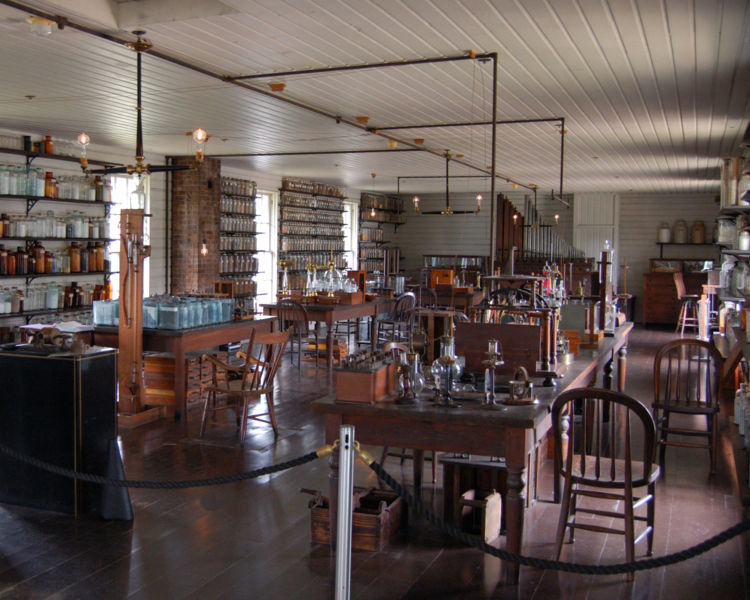
PLEASE VIEW THE RELEVANT VIDEO BEFORE ATTENDING THE LAB CLASS
| Back to Techniques Page |
| Contact Us |
| Home Page |
Example of a Typical Experiment
FAQ: My solution erupted and now there is nutmeg stuck inside of my condenser. How do I get it out?
FAQ: Why do we use reflux instead of heating the flask on the steam bath?
FAQ: Distillation is not extraction? When do you distill and when do you extract?
Reflux allows a mixture to be heated constantly without monitoring and without loss of material.
A reflux vessel such as a round bottom flask is attached to a water cooled condenser which prevents vapors from escaping during the heating process.
Water enters the condenser from the bottom and exits at the top.
Reflux can be used extract a compound or group of compounds from a solid matrix. For example, in 164/261, dichloromethane (solvent) is added to nutmeg and heated under reflux to extract trimyristin. The hot solvent leaches out the trimyristin from the plant material. This is an example of solid-liquid extraction.
A student needed to extract caffeine from tea leaves. After a discussion with his TA, he added 5g of tea leaves, 2g of calcium carbonate and 20mL of water to a 50mL round bottom flask. He assembled his reflux apparatus and used a Powermite as a heat source. The apparatus was assembled from the bottom upwards starting with clamping the round bottom flask containing the tea leaves above the lab jack. Boiling stones were then added and the condenser was inserted (with the water entering from the bottom) into the neck of the round bottom flask and clamped in place. The student made sure the condenser tubing was clamped and that the tubing drained into the sink. The water tap was turned on slowly to provide a gentle flow. The student turned the Powermite control to a low setting and then after a few minutes adjusted the control until the aqueous suspension reached a gentle reflux.
In a solid-liquid extraction (under reflux), the amount of solvent used should cover the solid matrix/ plant tissue.
Do NOT stopper the end of the condenser. Heating a closed system could create a potential BOMB!
Make sure that the cooling water enters your condenser from the bottom and exits at the top (into the sink!)
Add boiling stones to your reflux mixture to prevent bumping.
Q: My solution erupted and now there is nutmeg stuck inside my condenser. How do I get it out?
Your solution may have erupted because you forgot to add boiling stones to your round bottom flask. Leave the nutmeg in your condenser and clean it out later after the experiment.
Q: Why do we use reflux instead of just heating the flask on a steam bath?
Using reflux prevents the loss of any solvent by evaporation. The condenser cools any vapors that are formed and condenses it back into the round bottom flask. If heating was carried out using a steam bath alone, the solvent would quickly evaporate, potentially leading to a lower yield of the desired extract.
Q: Distillation is not extraction? When do you distill and when do you extract?
Distillation is used to purify a liquid mixture or to remove a solvent from a mixture. Reflux is used when you want to carry out an experiment at a constant elevated temperature e.g. solid-liquid extraction of nutmeg.